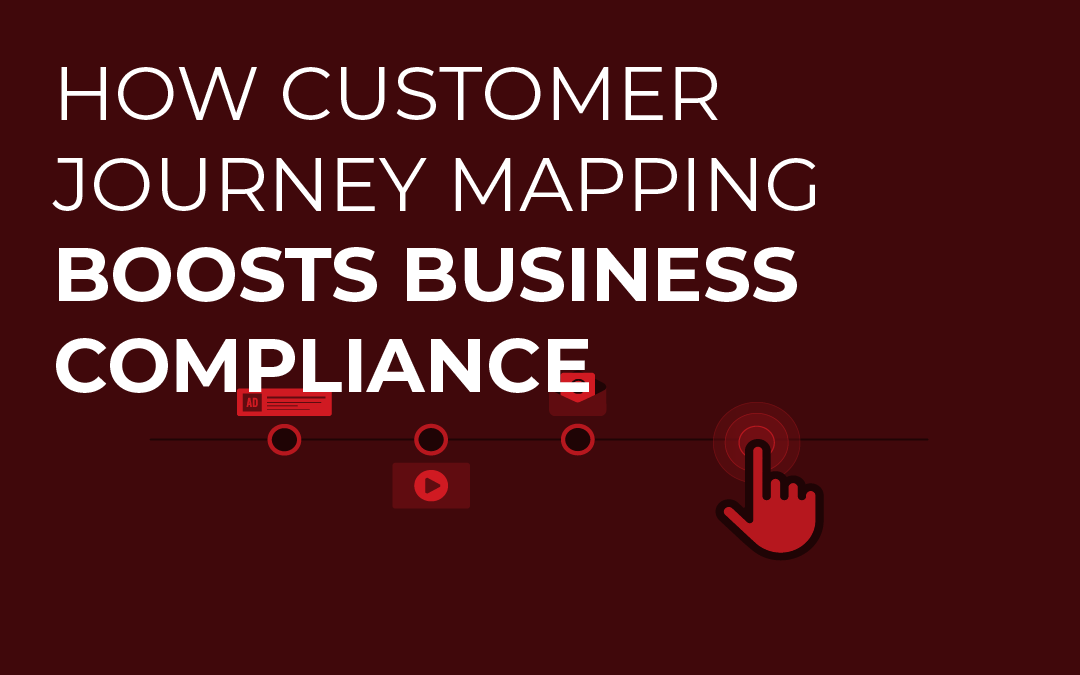We have all been there. You ask yourself, “How can I get my customers to do what I want?” It is a question that echoes in every marketing meeting, but it might be the wrong question entirely.
A better question is, “How can I help my customers get what they need from my business?” Answering this is the real start of effective customer journey mapping. Thinking this way changes everything about how you see your operations and customer experiences (including legal compliance, where Validiform comes in!).
Your website’s customer journey mapping shows you exactly where you are helping visitors or, more importantly, where you are letting them down. It provides a deeper understanding that replaces guesswork with knowledge. Let us explore how you can use this process to improve the customer’s experience.
Table Of Contents:

- What’s the Big Deal with Customer Journey Mapping Anyway?
- Why You’re Flying Blind Without One
- A 6-Step Guide to Customer Journey Mapping
- Step 1: Ditch the Guesswork, Get to Know Your People
- Step 2: What Are They Actually Doing? Define the Stages
- Step 3: Put on Their Shoes: Aligning Goals with Stages
- Step 4: Follow the Breadcrumbs: Plotting the Touchpoints
- Step 5: The Moment of Truth: Are They Winning or Losing?
- Step 6: Okay, Fix It: Making Smart Changes
- Don’t Overthink the Visuals
- Bringing It All Together for TCPA Peace of Mind
- Conclusion
What’s the Big Deal with Customer Journey Mapping Anyway?
A customer journey map is a visual representation of all the interactions a person has with your company. This applies whether they are online, on a mobile app, or walking into a physical store. It tells the story of their experience from their point of view.
Think of it as a road map for your customer’s adventure with your brand. It shows every customer touchpoint, every stop, and every potential pothole they might hit along the way. Your main goals are to make their trip as smooth as possible and improve customer satisfaction.
This process is about gaining empathy for the real customer, not just looking at analytics. The purpose of mapping customer journeys is to get a complete, comprehensive view of what a person is going through on a personal level. This shared vision helps align your entire organization, from marketing to customer service.
Why You’re Flying Blind Without One
Without customer journey maps, you are just guessing about the customer’s experience. You might think your checkout process is easy, but a map can show you that people are getting lost and abandoning their carts. This is a great tool for uncovering painful truths that cost you money.
Creating one of these maps forces you to shift your focus. Instead of pushing your own agenda, you start helping customers achieve their goals. When you do that, you find that achieving your own business goals, like improving customer retention, becomes much easier.
This understanding leads to better decisions and a clear team focus. You will stop wasting money on changes that do not matter to your audience. You will start fixing the actual problems that hurt sales and frustrate your visitors, which ultimately builds trust with your customer base.
A 6-Step Guide to Customer Journey Mapping

To create a customer journey map that is useful is not as complicated as it sounds. You just need to follow a clear process. Here are six steps you can take to build a powerful experience map for your own business.
Step 1: Ditch the Guesswork, Get to Know Your People
Who are your customers really? What drives them? If your answer is based on a hunch, you are already on the wrong track. You need real customer data to build a customer persona that means something.
The most successful companies have been doing this for years. A study by Gartner predicts that by 2026, 65% of B2B sales organizations will move to data-driven decision-making. You cannot map a specific journey for someone you do not truly understand.
Use surveys, interviews, and your own site data to gather customer feedback. Dig deep to find their motivations, their pain points, and what causes them to hesitate. This research is the foundation of your entire map and helps you understand customer sentiment at a fundamental level.
Step 2: What Are They Actually Doing? Define the Stages
Every customer goes through a few stages when interacting with you. For an online store, this could be Discovery, Comparison, Purchase, and Post-Purchase. These are the main chapters in the buying journey of your customer personas.
Your business model will change what these stages look like. A B2B service will have a more complex buying process than a simple t-shirt shop. The key is to define the logical progression an actual customer follows as they explore journey options with your brand.
Once you define the stages, you can start organizing interactions within them. This structured approach helps you and your team members make sense of complex customer journeys. It also prepares you to analyze each journey step in greater detail.
Step 3: Put on Their Shoes: Aligning Goals with Stages
This might be the most important part of the mapping customer process. At each stage, what is the customer trying to accomplish? Their goal is almost never what you think it is.
During the ‘Comparison’ stage, for instance, their goal is not “buy our product.” It is more likely “find the best solution for my problem without overpaying or making a mistake.” You can uncover these goals by reading customer support tickets and analyzing survey answers, which provide additional context.
Once you understand their goals at each stage, you can see if your website is helping or hindering them. Are you answering their questions clearly? Is your mobile app easy to use? This is where you connect the customer’s emotions actions to your business processes.
| Journey Stage | Customer Goal | Customer Actions | Customer Emotions & Pain Points |
|---|---|---|---|
| Discovery | “I need a solution for [problem].” | Searches online, reads articles, asks for recommendations on social media. | Feeling overwhelmed by options, unsure where to start. |
| Comparison | “Which option is best for me?” | Reads reviews, compares features, looks at pricing pages. | Anxious about making the wrong choice, confused by technical jargon. |
| Purchase | “I want to buy this easily and securely.” | Adds to cart, fills out forms, enters payment info. | Frustrated by long forms, worried about data security. |
| Post-Purchase | “I need help getting started.” | Looks for instructions, contacts customer support, joins community forum. | Confused by setup, disappointed if support is slow. |
Step 4: Follow the Breadcrumbs: Plotting the Touchpoints
Customer touchpoints are all the places where customers interact with your company. This could be a paid ad, a landing page, a product description, or even your contact form. These are the specific moments that make up each stage of the buying journey.

You can find these touchpoints using tools you probably already have, like Google Analytics 4. The Path Exploration reports show you the exact routes people take on your site. This reveals what people are actually doing, not just what you assume they are doing.
However, analytics only tell you part of the story. They might show a drop-off on a form but not the user’s struggle or the emotional experience. That is a blind spot that costs businesses money every single day, and it is something a well-crafted map helps to illuminate.
Step 5: The Moment of Truth: Are They Winning or Losing?
Now you compare what customers want to do with what they are actually doing. This is where you find the roadblocks, friction points, and opportunities for improvement. This is where you find the money you are leaving on the table.
Are people abandoning carts at the same spot in the marketing funnel? Do they visit your resource page but never download anything? Quantitative customer data from analytics points to the problem areas, but you need more context to understand the “why.”
Tools like Validiform become critical here because they fill in the gaps in your understanding. It goes beyond simple analytics by providing session recordings and video capture. You can watch a visitor get confused by your form, giving you the additional context and qualitative insight behind the data.
Step 6: Okay, Fix It: Making Smart Changes
You have found the problems, so what is next? The answer is not to overhaul your entire website at once. That approach can lead to chaos and makes it difficult to measure the impact of any single change.
Start by prioritizing the most important fixes. A good method is to look for changes that are both high-impact and relatively easy to implement. From there, your product team or service teams can form a hypothesis about what to change to improve customer success.
Then, you test it. Do not just make a change and hope for the best. Use A/B testing to prove that your proposed solution improves the user experience and helps achieve your main goals. This cycle of analysis, hypothesis, and testing is how you map future improvements and make real progress, one journey step at a time.
Don’t Overthink the Visuals
Let us be clear about something. Your customer journey map does not need to be a design masterpiece. You are not submitting this to an art gallery.
A simple spreadsheet or a journey map template can be one of the most effective ways to organize this information. Create columns for stages, goals, touchpoints, pain points, and solutions. The map visual is a tool for understanding and action, not a poster.
Some teams also create a service blueprint, which is related but different. A service blueprint template includes the internal systems and employee actions that support the customer’s experience. While a great tool, it’s important to start with the persona journey from the outside in before mapping internal processes.
Bringing It All Together for TCPA Peace of Mind
Mapping the customer journey gives you incredible insight into their needs and behaviors. It also helps you spot areas where your business might have compliance risks. This is especially true when it comes to legal standards.
When you map the user’s path, you document every single customer touchpoint, including forms where they give consent. In a legal dispute, however, can you actually prove they gave that consent? A map alone is not enough evidence to protect you.
This is where Validiform provides a critical layer of protection. It does not just help you see friction; it records the interaction. With video capture and session replays, you get indisputable proof of consent, which is a lifesaver for TCPA compliance. Plus, Validiform offers this robust protection, along with lead scraping and secure storage, at a much lower cost than competitors. Setup is simple, so you can start protecting your business right away. See how Validiform can protect your business and illuminate your customer journey. Get in touch with us today.

Conclusion
Your customer’s interaction with your website is rarely a straight line. People get distracted, they loop back, and they sometimes just give up. You cannot force them down a path they do not want to take.
When you take the time to build a customer journey mapping process, you move from guesswork to genuine understanding. It is a powerful shift in perspective that centers on helping the customer win. This focus on customer success builds trust and boosts customer retention.
When you help your customers achieve their goals, you will find that growing your business becomes a whole lot easier. You stop fighting for sales and start earning them through a better experience. It is a smarter way to work that benefits everyone involved.

